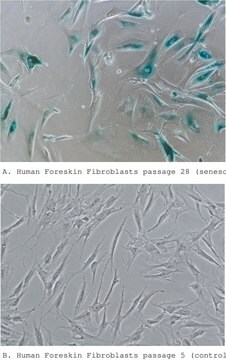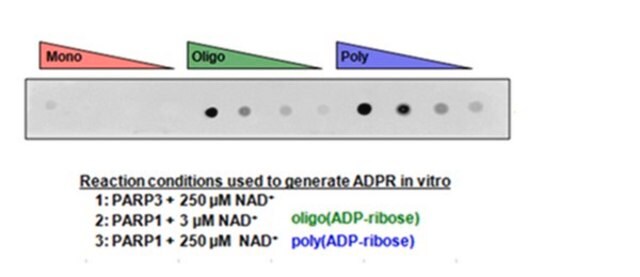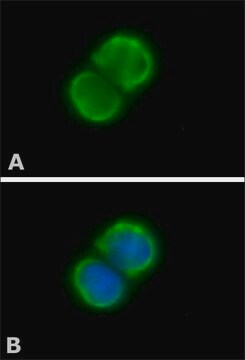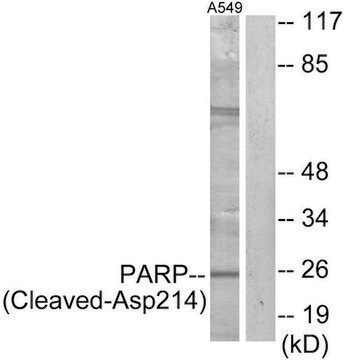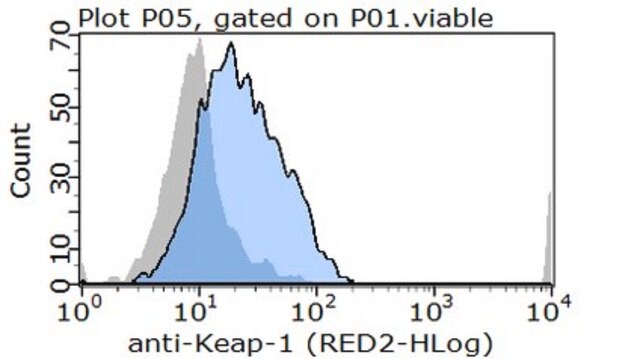P248
Monoclonal Anti-PARP antibody produced in mouse
clone C-2-10, ascites fluid
Synonyme(s) :
Monoclonal Anti-Poly[ADP-ribose] Polymerase
About This Item
Produits recommandés
Source biologique
mouse
Niveau de qualité
Conjugué
unconjugated
Forme d'anticorps
ascites fluid
Type de produit anticorps
primary antibodies
Clone
C-2-10, monoclonal
Poids mol.
antigen 116 kDa (PARP)
antigen 85 kDa (prICE/caspase-3 cleavage product)
Espèces réactives
hamster, rat, mouse, primate
Ne doit pas réagir avec
avian
Technique(s)
ELISA: suitable (Assay Dependent)
immunocytochemistry: suitable (Assay Dependent)
immunofluorescence: suitable (Assay Dependent)
immunohistochemistry: 1:10-1:100
western blot: 1:500
Isotype
IgG1
Numéro d'accès UniProt
Conditions d'expédition
dry ice
Température de stockage
−20°C
Modification post-traductionnelle de la cible
unmodified
Informations sur le gène
mouse ... Parp1(11545) , Parp2(11546)
rat ... Parp1(25591) , Parp2(290027)
Catégories apparentées
Description générale
Poly (ADP-ribose) polymerase 1 (PARP1)/PARP is encoded by the gene mapped to human chromosome 1q42. It is a nuclear protein with molecular mass of 113kDa and is characterized with three functional domains. It belongs to the PARP superfamily.
Spécificité
Immunogène
Application
Actions biochimiques/physiologiques
Forme physique
Clause de non-responsabilité
Vous ne trouvez pas le bon produit ?
Essayez notre Outil de sélection de produits.
Code de la classe de stockage
10 - Combustible liquids
Classe de danger pour l'eau (WGK)
nwg
Point d'éclair (°F)
Not applicable
Point d'éclair (°C)
Not applicable
Faites votre choix parmi les versions les plus récentes :
Déjà en possession de ce produit ?
Retrouvez la documentation relative aux produits que vous avez récemment achetés dans la Bibliothèque de documents.
Notre équipe de scientifiques dispose d'une expérience dans tous les secteurs de la recherche, notamment en sciences de la vie, science des matériaux, synthèse chimique, chromatographie, analyse et dans de nombreux autres domaines..
Contacter notre Service technique

